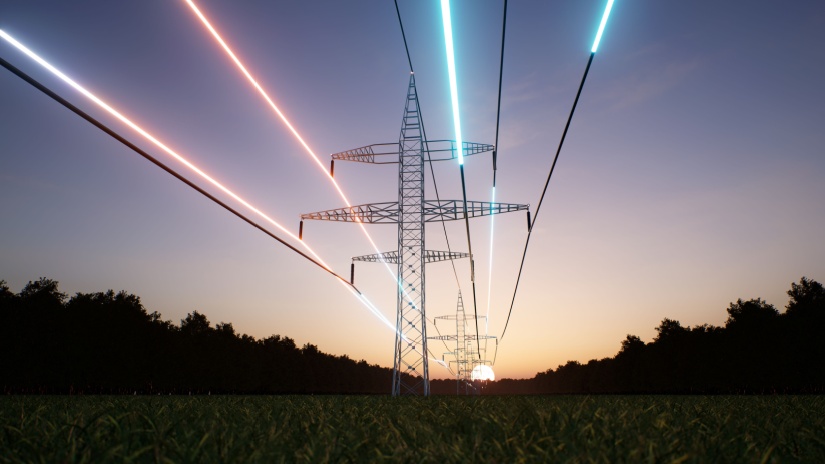Why Australia’s grid is struggling to keep up with the energy transition

Australia is in the middle of a historic shift from fossil fuels to clean energy. Solar and wind farms are being approved across the country, and storage solutions like batteries are beginning to scale.
But as the renewable energy boom accelerates, a critical weakness in the system has emerged: the inability to build transmission lines fast enough to carry that clean power to the people who need it.
Transmission is the invisible backbone of the energy system, transporting electricity from where it’s generated, often in remote, resource-rich areas, to urban and industrial centres.
Without new high-voltage lines, even the most ambitious renewable energy projects will sit idle, unable to feed into the national grid. And right now, the pace of transmission development is well behind where it needs to be.
What's holding projects back?
There are several reasons why transmission infrastructure is lagging. First and foremost is the lengthy and complex approval process. Building new power lines involves securing environmental approvals, navigating landholder negotiations, and undergoing rigorous community consultation.
In many cases, it can take five to ten years for a project to move from proposal to construction. That’s simply too slow to meet the demands of a rapidly changing energy system.
Opposition from local communities is also growing. Residents living near proposed transmission corridors have raised concerns about property impacts, biodiversity, land use, and health. While some objections are based on legitimate concerns, others stem from misinformation or mistrust. Regardless, the end result is often delay or in some cases, cancellation.
Add to this the rising costs of construction, labour shortages in the energy sector, and supply chain disruptions for materials like steel and transformers, and you begin to see why many major transmission projects are facing cost blowouts and timeline slippages.
The consequences of delay
The consequences of failing to build transmission lines quickly enough are serious and immediate. Renewable projects that are ready to go are being held back due to a lack of available grid connections. This leads to what’s known as "curtailment," where energy that could have been used is simply wasted because the grid can’t carry it.
For developers, this means lower returns on investment. For consumers, it leads to missed opportunities for cheaper, cleaner power.
There’s also the risk that delays will prolong Australia’s reliance on coal and gas. If renewable energy can’t reach consumers when and where it’s needed, the system has to fall back on existing fossil fuel infrastructure, extending the life of aging coal plants or driving up emissions through increased gas use. It’s a lose-lose scenario for climate goals and power affordability.
Worse still, without adequate transmission, the government’s 2035 and 2050 emissions targets are unlikely to be met, even if new generation projects continue to roll out. Transmission is the bridge between ambition and impact. Without it, the energy transition stalls.
The path forward
Australia’s energy agencies and governments are beginning to respond. Several projects have been declared critical infrastructure and given priority status to fast-track approvals. New compensation models are being developed for landholders, and community engagement strategies are evolving to improve transparency and trust. But the pace still isn't fast enough.
To truly address the bottleneck, Australia will need a more streamlined regulatory process, faster environmental approvals, and greater alignment between state and federal governments. It will also require upfront investment and long-term planning, recognising that power lines built today will serve communities for decades to come.
This is not just an infrastructure issue. It’s a test of political will, public trust, and national coordination. The transmission problem may be complex, but without solving it, the clean energy future remains out of reach.
Why choose Compare Energy to switch energy providers
While large-scale transmission issues play out at the national level, households still have power, literal and figurative, when it comes to their own energy choices. That’s where Compare Energy comes in.
As an independent energy comparison service, Compare Energy helps you navigate a rapidly changing electricity market and identify plans that align with your budget, energy usage, and environmental values.
With many providers offering greener, more affordable plans, Compare Energy gives you the tools to compare, switch, and save without the confusion. We make it easy to identify plans that support renewable energy, offer better rates, or accommodate solar and battery systems, so you can take part in the energy transition from your own home.
Even as Australia works to upgrade its grid, the choices consumers make today send a powerful signal to the energy market. By supporting providers that invest in clean energy and grid solutions, you help drive change from the bottom up.
You don’t have to wait for new power lines to make a difference. By choosing the right energy plan now, you can save money, reduce your carbon footprint, and support the shift to a cleaner grid.
Call Compare Energy today on 1300 790 106 and let us help you find a smarter, greener energy plan that works for you. Every household decision counts, and yours can help power the future.

